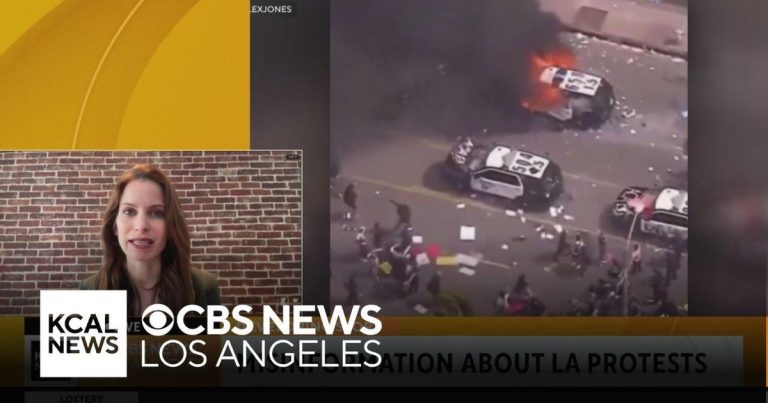Los Angeles Protests: Unraveling the Web of Misinformation
Los Angeles has been a crucible of social and political unrest in recent years, witnessing waves of protests on issues ranging from police brutality and racial injustice to economic inequality and environmental concerns. While these demonstrations have often provided a platform for legitimate grievances and calls for systemic change, they have also become fertile ground for the spread of misinformation, often amplified by social media’s echo chambers and the polarized nature of contemporary political discourse. Understanding the dynamics of this misinformation is crucial to accurately assessing the reality on the ground and fostering informed public discourse.
One recurring theme in the misinformation surrounding LA protests is the exaggeration of violence and property damage. While some protests have undeniably witnessed instances of destructive behavior, the scale and pervasiveness of these acts are often inflated, creating a distorted picture of widespread chaos. Bad actors, both within and outside the protests, sometimes engage in acts of vandalism or violence, which are then seized upon and disseminated online as representative of the entire movement. This narrative of widespread destruction serves to discredit legitimate grievances and undermine public support for the protests. Furthermore, the focus on isolated incidents of violence distracts from the core issues driving the demonstrations, hindering productive conversations about potential solutions.
Another common tactic employed to discredit protests is the misrepresentation of participants. Protesters are frequently labeled as “outside agitators,” “paid protesters,” or members of extremist groups, implying that the demonstrations lack genuine grassroots support and are driven by ulterior motives. This tactic seeks to undermine the legitimacy of the protests by suggesting they are not representative of the local community or driven by authentic concerns. Such narratives often rely on flimsy evidence, anecdotal accounts, or outright fabrication, yet they gain traction in online spaces where confirmation bias and partisan agendas reign supreme. The labeling of protesters also serves to dehumanize them, making it easier to justify harsh crackdowns and dismiss their demands.
The digital landscape has significantly amplified the reach and impact of misinformation surrounding protests. Social media platforms, with their algorithmic amplification and rapid information sharing capabilities, can quickly disseminate false or misleading information to vast audiences. Edited videos, out-of-context images, and fabricated narratives can go viral within hours, creating a distorted perception of events. Furthermore, the echo chamber effect within online communities reinforces pre-existing biases, making individuals more susceptible to believing information that aligns with their worldview, regardless of its veracity. This dynamic creates a self-perpetuating cycle of misinformation, where false narratives gain traction and become entrenched within specific segments of the population.
Combating the spread of misinformation about protests requires a multi-pronged approach. Fact-checking organizations play a vital role in debunking false claims and providing accurate information. News outlets have a responsibility to report responsibly and avoid amplifying unverified claims or sensationalizing isolated incidents. Social media platforms must take proactive steps to identify and remove misinformation and manipulative content. Furthermore, media literacy education is crucial to empowering individuals to critically evaluate information and identify potential biases. Promoting critical thinking skills and encouraging healthy skepticism can help individuals navigate the complex information landscape and distinguish between credible sources and misleading narratives.
Ultimately, fostering informed public discourse about protests requires a commitment to truth-seeking, critical thinking, and a nuanced understanding of the complex factors driving social unrest. Recognizing the prevalence and impact of misinformation is the first step towards fostering a more accurate and productive conversation about the issues that give rise to protests and the potential pathways towards meaningful change. By engaging with information critically, demanding evidence-based reporting, and challenging misleading narratives, we can contribute to a more informed and democratic society. Ignoring the misinformation and allowing it to fester only serves to deepen societal divisions and hinder the progress that genuine dialogue and understanding can facilitate.


